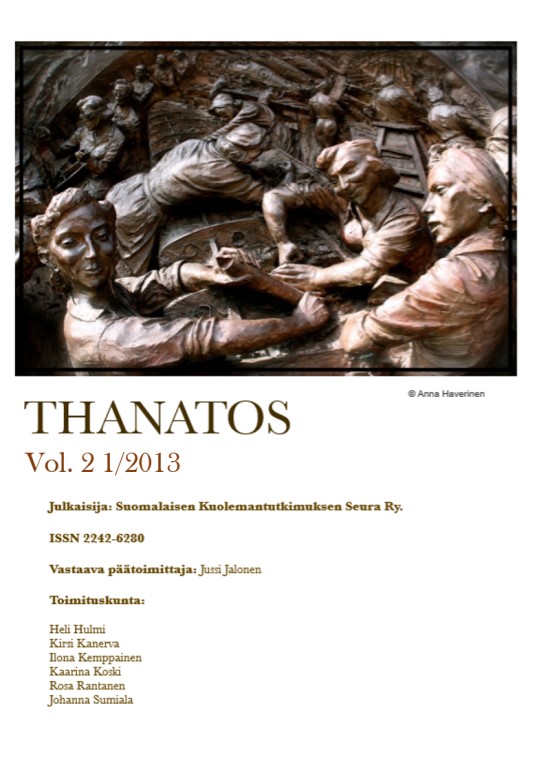Kaksi Tšehovia: kuoleman esittämisestä kirjallisuudessa ja näyttelijäntyössä
Abstrakti
This article discusses the ways the Russian writer Anton Chekhov (1860–1904), and his nephew, the actor, teacher of acting, and writer Mikhail (Michael) Chekhov (1891–1955) dealt with the theme of death. The article is based on my teaching at the Helsinki University and my research on Russian literature and theatre. Contrary to general notions, Anton Chekhov’s early short stories blend humour with seriousness, with death playing the main part in several of them. The one-act play The Swan Song deals with death in the theatre; the play was used to illuminate the concept of atmosphere by Michael Chekhov in his acting method. The dramatic innovations in Chekhov’s The Seagull are given a more detailed discussion; the concept of “death behind the scenes”, various ways of acting, as well the play’s affinities to symbolism. The central symbolist theme of death is discussed in connection with Russian symbolist theatre, Konstantin Stanislavsky’s experiments and Vsevolod Meyerhold’s theatre essays. New interpretations of Chekhov’s drama by Anatoli Efros and Krystian Lupa are briefly mentioned.
Michael Chekhov’s philosophy of theatre and acting methods deserve a closer attention in the ways he blended realism with symbolism. Chekhov received critical acclaim for the innovative ways of expressing the moment of passing away when he acted the death scenes in Strindberg’s Erik XIV and Shakespeare’s Hamlet. Chekhov’s memoirs, published with the title The Path of the Actor, provide an insight into the ways of merging experiences of death – whether imminent or actual – with theories of art. Chekhov recounts how he witnessed a surgical operation as a battle between life and death, and he develops the experience to point out some parts of his acting method. Chekhov used his feelings of loss and grief – namely, the death of his parents and close friends – in his practice and theory of theatre, e.g. in the way of expressing passing of time on the stage. In Chekhov’s thinking, the “Dead” Theatre and “Living” Theatre were also concepts of art, applicable to both Soviet Russian and Western theatre in various ways.
Tiedostolataukset
Julkaistu
Numero
Osasto
Lisenssi
Copyright (c) 2023 Liisa Byckling

Tämä työ on lisensoitu Creative Commons Nimeä-EiKaupallinen-EiMuutoksia 4.0 Kansainvälinen Julkinen -lisenssillä.





